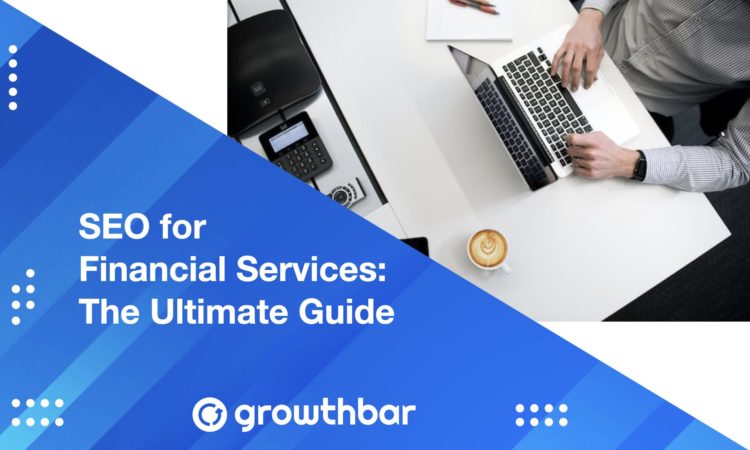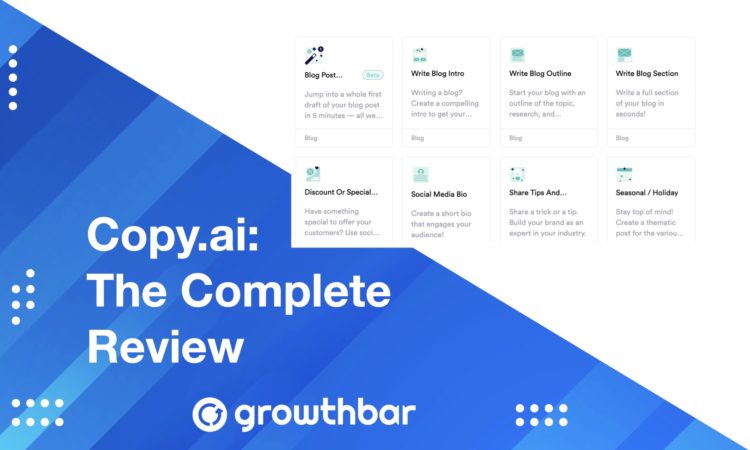- Copy AI vs. Jasper [2025] - March 14, 2023
- 11 Best AI Marketing Tools [2025] - January 30, 2023
- Jasper vs. Rytr [2025 Showdown] - December 21, 2022
Ended soon
The finance industry is one of the most competitive industries in the world. With the advent of the Internet, it became much easier for people to invest in stocks, bonds, and other assets without an agent or broker.
This has caused financial services to become overcrowded with competition — but there are ways to get an edge.
If you’re involved with online financial work in any shape or form, from an NFT website to an investment firm to a financial service SaaS company, you’ve probably heard about how important SEO is for website traffic, search engine rankings, and converting customers.
So does SEO really work for finance sites? Let’s take a look.
Table of Contents
What is SEO for Financial Services?
Search engine optimization (SEO) is the practice of improving the ranking of a website on search engines. The more optimized a post is for search engines, the higher you’ll rank on Google.
Ranking high on Google’s SERP (search engine results pages) means more eyes on your posts. Take a look at how the click-through-rate changes as you move further up the SERP.
The link in the top Google search ranking has an average click-through rate of 32%…while results on the 2nd page of Google receive less than 1% of all clicks.
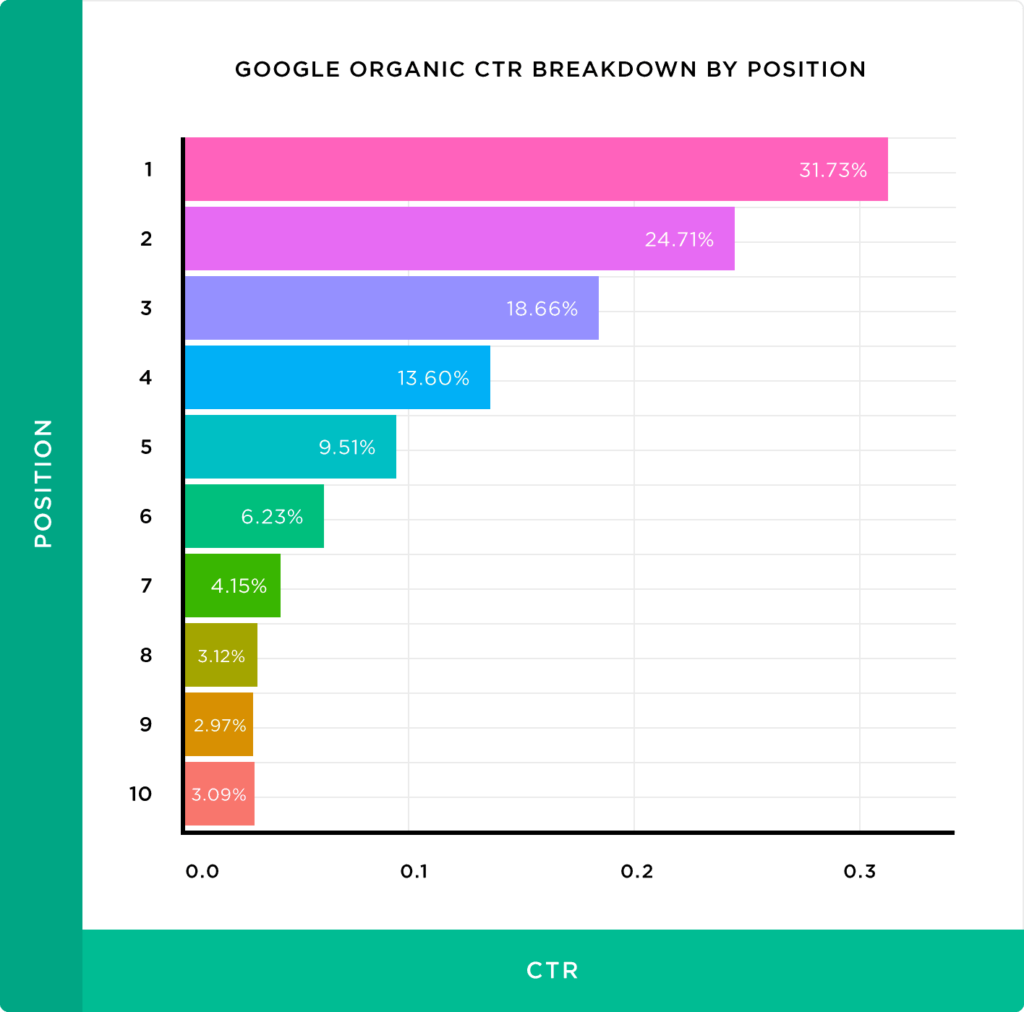
Some of the factors that impact how you should approach SEO for finance-related content include:
- The complexity of your service: Financial services are often complicated. Even if you know all the jargon, keeping your posts easy to read and accessible is a better user experience. This of course can depend on…
- Your target audience: Are you working with individuals who need saving tips for a vacation, or enterprises that need an FP&A solution? Determining your target audience will guide your keyword strategy.
- The competition in the space: There’s a lot of competition in financial industry, but you can stand out by finding your niche and optimizing your website.
Why Should Finance Companies Use SEO?

Higher Ranks Mean More Customers
Some SEO stats for you: more than one billion people use Google every month. But over 90% of all content indexed by Google gets no traffic.
Why? Seventy-five percent of people never scroll past the first page of search engines, and only 7% make it to the third page.
You can write the best, most informative, detailed finance article on the planet, but if you’re not optimizing it for search engines, it’s not going to be seen.
So the most obvious reason that a finance company should use SEO is to improve rankings to get more eyes on your website (and product).
Organic Traffic Reduces Marketing Costs
Unlike traditional forms of marketing, such as television or print advertising, SEO can produce lasting results with a smaller monetary investment.
How? Traditional advertising channels are expensive: you pay on a cost-per-click (CPC) or cost per 1,000 views (CPM) model. With SEO, you only pay for the cost of making web pages and blog articles. You don’t pay for every click or view, just the time spent optimizing your site.
It’s really one of the most cost-effective marketing strategies out there.
Why is SEO different for financial sites?
SEO has the same fundamentals across the board, but there are always a few differences between industries.
These can be summed up with some very important SEO acronyms.
YMYL (Your Money Your Life)
“Your Money or Your Life” (YMYL) is a designation for pages that Google determines could impact “the future happiness, health, financial stability, or safety of users.” YMYL pages are held to a higher quality standard because they could hurt searchers physically, financially, or emotionally if they share inaccurate information.
Google is a business: they want their customers – aka searchers – to have a positive experience using the platform. Therefore, they prioritize accurate, helpful information. They’re not going to rank websites that might give false information that could damage someone’s health and finances.
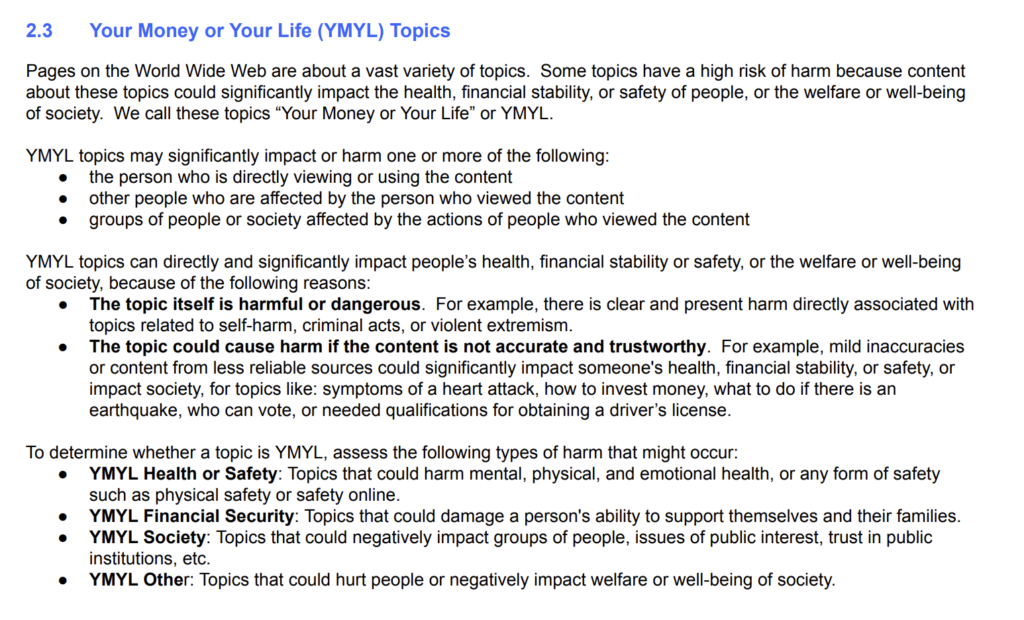
Financial companies fall directly into the YMYL designation, which means your content is held to higher standards by search engines. This makes search engine optimization all the more important.
How to meet those higher standards? EAT!
EAT
Google also rewards great E-A-T content: content with Expertise, Authoritativeness, and Trustworthiness. Google’s Quality Rater Guidelines make it clear that EAT is incredibly important for ranking, especially for YMYL pages. In fact, the EAT acronym appears at least 186 times in the guidelines.
To show great EAT content, finance sites should:
- Garner backlinks: This shows other sites trust your content (more on this later).
- Provide accurate, helpful content: This will help you get organic backlinks, as well as reduce bounce rate and increase user satisfaction.
- Send outbound links to high-quality content: This shows your page or post is well-researched and informative.
How do you know if your EAT efforts are successful? You guessed it…
DA (Domain Authority)
Domain Authority is a number that designates how authoritative your website is. The higher the number (out of 100), the more trustworthy Google considers you, and the more likely you’ll rank higher on the SERPs.
You can raise your domain authority primarily by building up backlinks to your content.
But given the higher YMYL and EAT standards, it can be more challenging for finance companies to raise their domain authority without following other SEO best practices.
How to Do SEO for Finance Companies
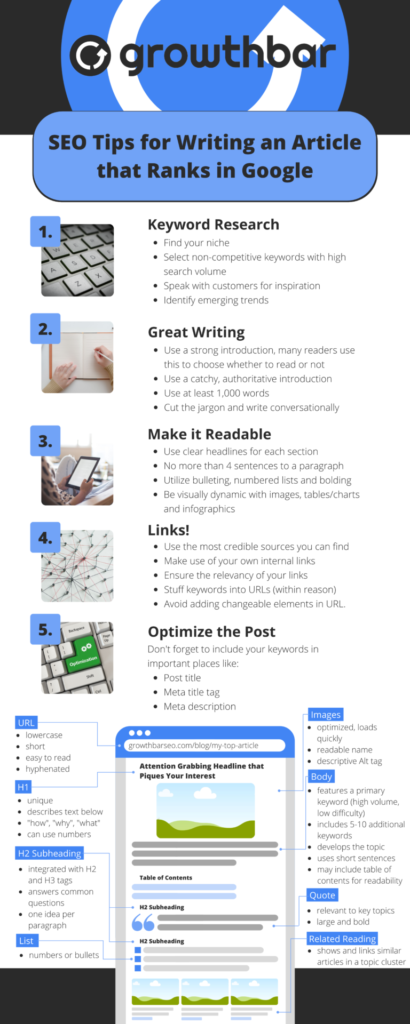
1. Choosing a Niche
If you have a smaller financial website or are just starting your SEO journey, a niche guides keyword research, makes it easier to follow the topic cluster model, and helps you stand out from the competition.
If you write about every topic under the sun, you probably don’t know much about any of them. If you write a lot about a few topics, you probably have a good handle (and expertise and authority) on those topics and your content can be trusted.
So instead of covering an array of topics in the finance space—and treating each article as equally important individual pieces—choose a few main topics you want your content to cover. Then, organize them into content clusters.
In the content cluster model, each content topic has a single “pillar” page that acts as the main hub of content. Usually, this means you’ll have one 3,000- or 4,000-word blog post on a topic and several other 1,000-2,000 word articles “clustered” around this pillar.
Google and other search engines favor this model because it helps indicate what topics you have expertise and authority in; what your readers can trust you to provide information about; and that your blog and website are organized and easy to use.
You aren’t writing posts just because they’ll rank well. You’re writing them because they’re relevant to your site and helpful to your readers.
2. Keyword Research
Keyword research is the core of any great search engine optimization strategy. Keywords are the phrases searchers put into Google to find results.
You want to choose keywords that your ideal customer is searching on Google. For example, the keyword or keyword phrases of this post would be “SEO for finance” or “how to do SEO for financial services.” We’re trying to reach people (hopefully you) who need help with search engine optimization for your financial site.
Depending on what financial services you offer and who your ideal customer is, keywords can range from a very broad “How to invest” to a more specific “How to invest in the S&P 500.”
You can probably come up with endless topics and questions that have to do with finance. But, keyword brainstorming is just one piece of the puzzle. You need to make sure your keywords are at an appropriate difficulty level for your site.
If you have a low domain authority or are just starting out, the best financial site keywords will be those that have a low SEO difficulty level and high search volume. That means it will be easier to rank but you’ll still get a lot of searchers’ eyes.
The easiest way to figure this out? Using a keyword research tool like GrowthBar. You can use it in the application, or right on Google Chrome, which is my favorite. Take a look at some insights on those two finance keywords I offered above:
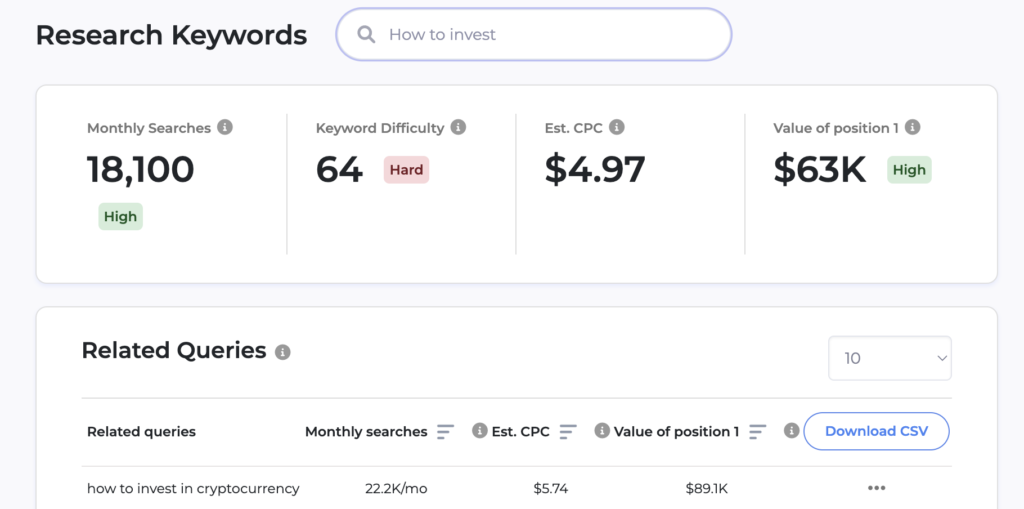
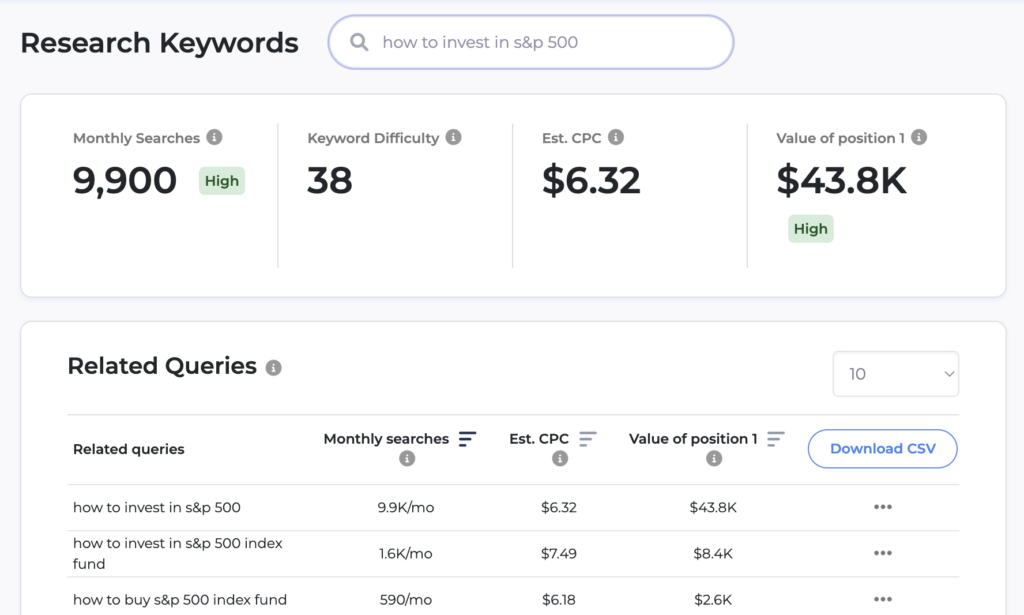
The broader “How to invest” keyword is tougher to rank for, but has a lot of monthly searches. If you have a very high domain authority and investing is your key offering, then it could be worth it to go for that keyword, especially as a pillar page.
Looking for less competition to rank? “How to invest in S&P 500” isn’t the easiest keyword to rank for, but it’s much easier than “How to invest.” Plus, there’s still a lot of search volume.
If my DA is lower than a 30, I might keep looking for an easier phrase to rank with. I’d use GrowthBar’s “related queries” to find the best combination of high search volume and lower competition.
3. UX & UI
User experience and user interface are two different but interconnected SEO factors that impact traffic, bounce rate, brand recognition, and more.
Prioritizing UX and UI is a huge part of SEO. You want your website to be clean, mobile-responsive, easy to use, and beautiful. Customers aren’t going to want financial advice from a slow, clunky, or outdated site.
Take a look at this example of Fidelity’s finance app. They’ve been continuously updating it, with one iteration going from this:
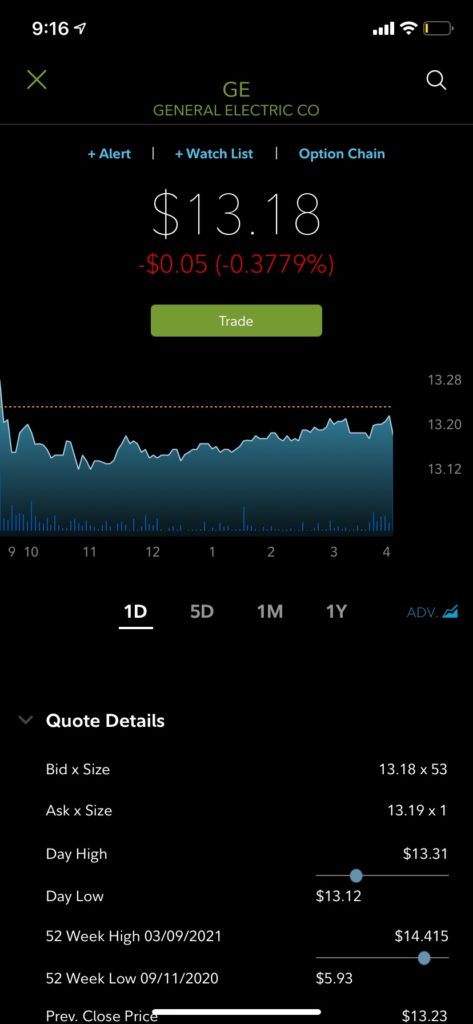
to this:
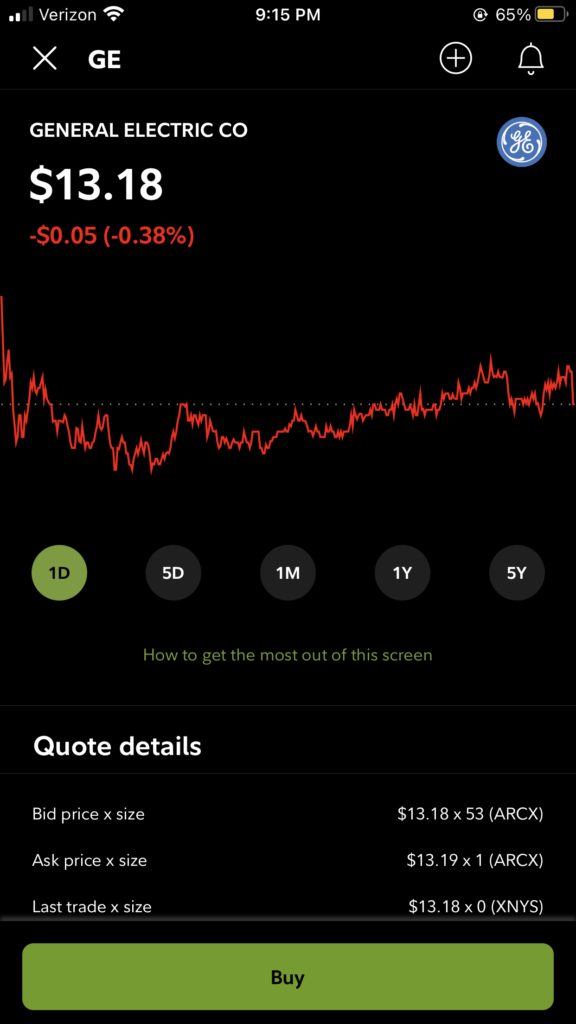
This is just one page, but the app became much easier to use, investing easier to understand, and it was overall more enjoyable to use.
Sites must also follow the WCAG (Web Content Accessibility Guideline), an internationally recognized set of guidelines for digital accessibility that are managed by the W3C, the international web standards group.
Learn more about why UX & UI matter for SEO.
4. URLs & Titles
Like any great business, Google wants to be as helpful as possible to its customers. If your URL structure is confusing, complex, and hard to read, it can lead to lower rankings on Google’s SERP.
Some guidance from Google Search Central itself:
You’ll want your URLs to match with the page or article titles. Take a look at the URL for this post. It’s almost the exact same as the title.
Optimized URLs and titles should also include the keywords of that post. But, don’t keyword stuff.
For example, we wouldn’t have our URL be:
/seo-for-finance-search-engine-optimization-for-financial-services
5. Write Optimized Blog Posts
Google wants to give searchers what they’re looking for, so it’s going to rank posts that answer questions in a clear, interesting, and engaging way.
Writing keyword-driven blog posts that are optimized for search engines will help you rank on Google fast. Optimized articles will need to incorporate everything we’ve already discussed, including EAT content, great formatting (for UX/UI purposes) and a solid title and URL structure.
But one of the most important things about writing a great blog post is…actually making it great. The content should be accurate, informative, and easy to read and understand.
Keywords should also match content complexity. If you’re writing the post “What is cryptocurrency?” you’ll want to cover all the basics. Searchers of that term probably have less financial knowledge than individuals searching for “the best dynamic pricing software.”
A quick tip: use FAQs at the beginning and end of your posts – and even on product pages – to cover frequent search terms. Finance is complex: there are almost endless questions to answer to approve your authority and expertise in your niche.
Need a tool to help you win in finance SEO? Write AI blog posts with the click of a button with GrowthBar.
6. Domain Authority
The higher the domain authority, the more trustworthy Google considers you, and the more likely you’ll rank higher on SERPs (search engine result pages).
Let’s look at some domain authorities in the financial niche:
- JP Morgan Chase has a DA of 71
- Ethereum has a DA of 77
- Investopedia has a DA of 92
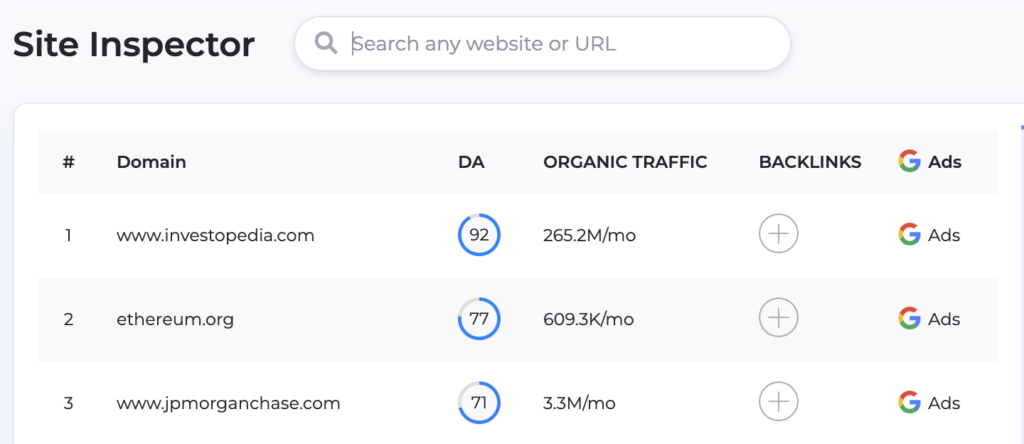
If you have lower domain authority, don’t worry. You can still compete by choosing keywords with a lower ranking difficulty, writing excellent and informative posts, and building up high-quality backlinks.
Which takes us to…
7. Internal and External Links
Internal and external links help improve your DA, keep traffic on your site longer, and create a more cohesive web experience for searchers and Google crawlers.
Internal links
These are the links that connect all your website’s pages and blog posts to one another. When you have relevant anchor text in a post, you’ll want to link it back to a blog or page you have on that topic.
Internal links show to Google that:
- You have authority and expertise in specific topics;
- Your posts are related to your products and offerings; and
- Your site is organized and easy to follow
They’re helpful for readers too. Think about it this way: if you talk about a topic in your post that you don’t explain, you don’t want your traffic to go back to Google to figure out what it is. You want to keep them on your site by linking to a post you’ve written that covers the topic.
External links
External links cover both the terms backlinks (links coming to your site) and outbound links (leaving your site).
Outbound links are links that will take a user off of your site and backlinks take users from other sites to yours. They’re like a digital works cited that shows where you got your information from.
When a site like that chooses to link to a piece of your content, it’s sending a signal to Google that your content is worth being recommended. The best links are from sites that are in the same space or niche as you.
Backlinks are especially important for new or smaller websites. They’re one of the primary ways Google knows that your website is trustworthy enough to send searchers to.
The more high-quality backlinks you get, the higher your domain authority. This will lead to higher rankings and more organic backlinks (when writers use information from your site for their posts).
Outbound external links are links going from your site to other sites. Like references on a resume or documents on works cited, backlinks help verify and authenticate posts and promote relevant and authoritative search results.
They show Google that you care about quality and that you’re producing fair, well-researched content. They also help build trust and authority with your audience by showing them that you have sources for your information: you’re not just sharing opinions.
Ultimately, the impact of external links on SEO depends on a variety of factors, including the quality and relevance of the external websites, the number of external links, and the anchor text used to link to them.
Learn all about external links here.
8. Security & Privacy
Privacy and security are paramount for financial service websites – probably even more than other sites. Customers will not use a financial website that they don’t trust.
Google also wants a secure site that’s easy for their spiders to crawl. If your site isn’t visible to search engines, you’re not going to appear in the search results no matter how amazing your content is.
Having a secure site means installing an SSL certificate, which adds “HTTPS” to the beginning of your URL, as opposed to unsecured site URL structures that have only “HTTP.”
Having a valid SSL certificate encrypts all the data being transferred to and from your site. It reduces the risk of being hacked and is a ranking signal because it signifies trust.
9. Tracking Progress
Search engine optimization is important, but only if you know what’s working–and what’s not.
An SEO audit tool can be super helpful here. They uncover website deficiencies that are holding your site back in terms of organic ranking.
Like other audits, this process analyzes your website with a fine-toothed comb, noting problems that hold you back from your optimal organic search performance. Keeping up on-site audits can help to drive organic traffic, secure and maintain strong rankings, and increase revenue.
After an audit, you’ll want to keep up with the health of your site and its SEO progress. One of the easiest (and most affordable) ways to do that is by using Google Search Console. Google Search Console is an analytics tool that helps you understand the comings and goings of visitors to your site as well as the performance of your site.
Imagine slipping into Google’s shoes and being able to see exactly how Google’s crawlers see your website. The information provided to website owners through the Google Search Console includes site performance, highest-traffic queries, and keyword research.
You can also check out an SEO tool like GrowthBar, to get in-depth information on the ranking of your site, your ranking for individual keywords, and how you compare to your competitors.
10. Review Your Technical SEO
Technical SEO can be more straightforward than improving content and backlinks. Technical SEO aspects include:
- Page loading speed (the faster the better)
- Privacy and security (like we covered above)
- A clear URL and site structure
- Add XML sitemaps that list all your key pages
- Include schema or structured data to help search engines organize and categorize your content
- Set up necessary redirects
11. Include Other Marketing Strategies
As important as SEO is, it doesn’t happen in a vacuum. You’ll need to employ strategies to boost your off-page SEO in addition to backlinks. Off-page SEO sends “signals” to your pages and helps boost website traffic.
Whether this is through AI marketing, paid ads, social media, or content marketing, implementing other marketing strategies (perhaps with the help of a marketing agency) will enhance your SEO efforts.
Conclusion: Use SEO for Your Financial Service Site
Financial websites have a lot of search opportunity and a huge market to capture. Following these SEO finance best practices will help with more traffic, more leads, and more customers.
Want to put in even less time? Try our AI-powered SEO tool, GrowthBar, which writes optimized blog posts for you. With keyword research, rank tracking, and competitive insights, it’s the #1 SEO tool on the market.

